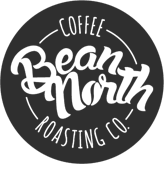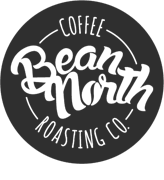We recently visited our coffee producers in Guatemala
|
A group shot of the Latin American coffee producers, North American coffee roasters, and partners from Sustainable Food Lab, Maya Cert, Global Soil Alliance, and On The Ground.
|
Bean North owner Michael visited Guatemala in February 2019. We had been to this beautiful country before and were excited to spend more time with our Guatemalan producers as well as other Latin American producers. Representatives from 11 cooperatives located in Colombia, Guatemala, Honduras, Mexico, Nicaragua and Peru traveled to Panajachel. They were joined by 8 coffee roasters from Canada & USA as well as staff from Cooperative Coffees, Sustainable Food Lab, Maya Cert, Global Soil Alliance, and On The Ground. The week started with meetings in Panajachel - the focus was the Cool Farm Tool. Participants then followed the shore of Lake Atitlán towards Quetzaltenango and El Quetzal for farm visits and fieldwork.
|
|
|
|
The six Cool Farm Tool principles. A great presentation by Daniela from the Sustainable Food Lab. |
The first day of the exchange focussed on the Cool Farm Tool. This Tool is a farm practices and resource management calculator that allows farmers to measure their environmental impact (positive or negative), and illustrates a variety of practical options that could improve the farmer’s environmental footprint and overall farm management “score.” After a presentation by the Sustainable Food Lab, there was a discussion on its practical applications in the field. Multiple producer cooperatives already work with the Cool Farm Tool and they enthusiastically shared their experiences. We heard how this Tool helps them calculate the carbon in their soils and what the result on the 'sustainability' of their productive systems is. Soil naturally absorbs carbon from the atmosphere through a process known as sequestration which not only reduces harmful greenhouse gasses but also creates more fertile soil. One of the things we heard repeatedly is that emissions from farming are often significantly lower than the 'carbon-capture' (absorption) is. As Monika Firl - Director of Sustainability at Cooperative Coffees - says: "Industrial agricultural is clearly identified as a primary contributor of total greenhouse gas emissions worldwide. But while industrial farming is a big part of the problem, small-scale, organic coffee farmers can be a significant part of the solution to current, global, climate-change challenges."On the afternoon small groups worked together to learn how to use the Cool Farm Tool to assess the carbon footprint on production systems and to plan for best practices from the producer's perspective. Michael worked together with Alberto & Honorato from the Peruvian Cooperative Pangoa, Matt from Just Coffee Cooperative and Daniela from Sustainable Food Lab. They used the Cool Farm Tool to input data for an average 1 hectare farm at Pangoa, Peru.Of course, no tool is perfect and during the discussion that followed a few of the questions discussed were: Would this be an effective tool to encourage the application of best "regenerative organic" practices? Does it facilitate and/or simplify both internal and external organic inspections? Does the tool recognize the "environmental service" provide by organic farming? In what ways could we take advantage of this tool in practical terms? |
 |

|
|
Small groups work together and learn how to use the Cool Farm Tool. |
 |
|
Left: Part of the second day was spent on a presentation on Global Context and Soil Health with participation of Alan Gonzalez of Global Soil Alliance and Noel Rivera of Maya Cert. |

|
 |
|
Left: a beautiful nighttime view on Lake Atitlán. Right: We visited multiple integrated farms that are owned by farmer-members of Manos Campesinas and San Pedro. Here you see coffee cherries drying.
|
|
|
|
The effects of climate change are real for our coffee producers. You can clearly see that the cherries on this tree don't look healthy at all. The farmers told us that the rains now come at a different - unpredictable - time. The rains have also changed from a shower-like rain to a more intense downpour and wash all the nutrients downhill.This change in precipitation has an effect on the coffee trees, and in combination with the change in temperatures it means that harvests are down. When the cherries shown on the photo are picked, they are often empty - meaning that there are no beans inside, or sometimes only one bean (usually each cherry contains two beans). This means that the farmer has no (or a lot fewer) beans to dry or sell.Of course this isn't the first time producers need to deal with climate change. The royal (leaf rust) crisis that started around 2012 is still in everyone's mind. At that time some of our producers were successful in managing their farms through intense organic practices and they were able to grow stronger, 'roya-resistant' trees. This knowledge has since spread to producers in different countries, thanks in part to workshops and exchanges organized by the Cooperative Coffees Carbon, Climate & Coffee Initiative.At this time there's very little the farmers can do to mitigate the effects the rain and changing climate have. The photo below shows soil pits that farmers create close to their coffee plants. The heavier rains tend to wash all the nutrients downhill. Soil pits are dug to hold moisture and nutrients from the compost to ensure that the coffee plants get all they need. If that isn't enough, farmers dig under the root system to apply compost directly to the plant - you can imagine that this is a very time consuming task.Many farmers are looking into commercializing other parts of their integrated farms. Most of them already grow various products on their land for sustenance, however now they see the need to find ways of increasing their income since coffee brings in fewer funds - examples of other common commercial products are honey, cocao, latex (rubber) and sugar. |
 |
 |
 |
On the right you see the soil pits that help keep the nutrients close to the trees. A couple of examples of diversification on the farm: honey bees & a rubber tree - the white milky sap is latex.
 |
 |
 |
The group visited Cafe Armonia ('Cafe Harmony'). This cafe is owner by Manos Campesinos, one of the Guatemalan producer cooperatives we trade with. They roast their own coffee in the 'tostaduria' and serve delicious espresso based drink & lunch in the modern cafe. It's a hotspot in Quetzaltenango. And of course, no trip to origin is complete without a cupping session. We always have a great time when tasting the local coffees with producers and staff!
 |
"To be recognized as the best coffee in the region, offering high quality products and service surpassing the expectations of our customers." |






Great questions Julia!
You can find all the details on https://coolfarmtool.org. There are definitely Canadian organizations and alliances that use the Cool Farm Tool. Unfortunately, we can’t answer your question regarding awareness about the Tool within governments. The Cool Farm Alliance (see link above) could answer that question for you.
Have you ever applied this incredible knowledge (especially. The Cool Farm Tool) in Canada? Do our governments know about it?
Leave a comment